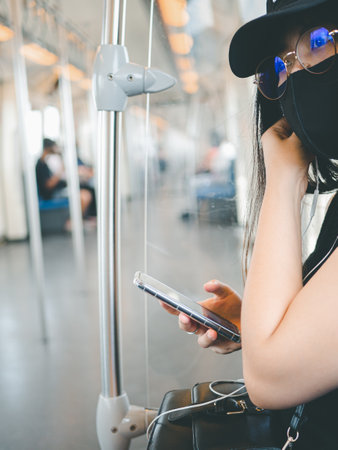1. Understanding Digital Overload in the UK
The United Kingdom stands at the forefront of digital adoption, with recent Ofcom reports highlighting that over 94% of British adults own a smartphone and spend an average of four hours daily online. This digital saturation is woven into nearly every aspect of modern British life, from work emails on the morning commute to endless social media scrolling during tea breaks. While technology has brought remarkable convenience and connectivity, it also raises concerns about screen fatigue, diminished attention spans, and declining mental well-being. Data from the Office for National Statistics indicates a notable increase in reported stress and anxiety linked to digital overload, especially among young people aged 16 to 24. Across cities like London, Manchester, and Edinburgh, Britons are experiencing a blurring of boundaries between work and leisure as remote working culture persists post-pandemic. Meanwhile, local surveys reveal that nearly one in three UK adults admit to feeling overwhelmed by their devices but struggle to disconnect due to social expectations and professional demands. Understanding these unique pressures provides the foundation for effective digital detoxing tailored specifically to British lifestyles and cultural nuances.
Health Impacts of Constant Connectivity
The UK has one of the highest rates of internet usage in Europe, with the average adult spending more than 4 hours online each day. While this digital integration offers convenience and flexibility, it comes with substantial health consequences—both physical and mental. Understanding these effects is crucial for anyone considering a digital detox as part of a healthier lifestyle.
Physical Health Consequences
Prolonged screen time is linked to a range of physical issues that are increasingly prevalent among UK residents. Common symptoms include eye strain (often referred to as “digital eye fatigue”), headaches, neck and back pain due to poor posture, and even repetitive strain injuries. The table below summarises some key findings from recent NHS and Public Health England reports:
| Health Issue | Prevalence in the UK | Main Cause |
|---|---|---|
| Sleep Disruption | ~40% adults report poor sleep quality | Blue light exposure from screens before bedtime |
| Eye Strain | Over 60% of frequent device users experience symptoms | Extended periods focusing on digital screens |
| Poor Posture & Musculoskeletal Pain | Increasing rates among remote workers | Lack of ergonomic workspaces at home |
Mental Health Risks: Anxiety, Stress, and the Always On Culture
The mental health impact of being constantly connected is significant. The UKs Office for National Statistics (ONS) has highlighted rising levels of anxiety and stress attributed to relentless digital engagement. The expectation to remain available outside traditional working hours—commonly referred to as the always on workplace culture—has blurred the boundaries between work and personal life. This phenomenon is particularly acute in sectors such as finance, tech, and media, where instant responsiveness is often seen as essential.
Key Mental Health Concerns
- Anxiety: Frequent notifications and pressure to respond quickly can heighten stress levels and lead to persistent worry.
- Reduced Concentration: Multitasking across apps and platforms diminishes productivity and increases cognitive fatigue.
- Social Isolation: Paradoxically, high social media use can reduce face-to-face interaction, contributing to loneliness—a concern especially noted among young adults in the UK.
The Importance of Recognising These Effects
Acknowledging these health impacts is the first step towards regaining control over your digital habits. By understanding how constant connectivity affects well-being, UK residents can make informed decisions about when—and how—to unplug for improved physical and mental health.
![]()
3. Why a Digital Detox Matters in British Society
The UK is renowned for its fast-paced urban life, deeply embedded work ethic, and strong sense of community. However, this environment has also fostered a culture of constant connectivity—both at home and in the workplace. Taking regular breaks from digital devices is becoming increasingly crucial for maintaining well-being and balance.
British Social Norms and the Need to Unplug
Despite being famous for valuing privacy and personal space, British society has seen boundaries blur due to smartphones and social media. The “always-on” mentality can lead to digital fatigue, making it harder to fully engage in face-to-face interactions or enjoy traditional British pastimes like afternoon tea or a walk in the countryside. Stepping away from screens allows individuals to reconnect with these cultural rituals, fostering genuine relationships and improving overall quality of life.
The Impact of Work Culture on Well-being
The UK workforce is known for its dedication, but this can sometimes translate into extended hours spent on emails, Zoom calls, or instant messaging—even outside official working times. According to a 2023 report by the CIPD, nearly half of British employees feel they are expected to be available online beyond their contracted hours. A digital detox helps establish healthier boundaries between work and personal life, supporting mental health and productivity while reducing burnout risk.
Family Life and Digital Boundaries
In many British households, technology now dominates family time—whether it’s TV dinners or scrolling through phones during conversations. Setting aside regular device-free periods encourages meaningful family interactions and strengthens bonds across generations. This approach not only preserves cherished traditions but also sets a positive example for children growing up in an increasingly connected world.
In summary, taking intentional breaks from digital devices aligns with core British values: respect for personal space, work-life balance, and the importance of community. Embracing digital detox practices is not just about reducing screen time—it’s about nurturing a healthier, more fulfilling way of living in modern Britain.
4. How to Plan a Successful Digital Detox in the UK
Preparing for Your Digital Detox: Practical Steps
Embarking on a digital detox can be daunting, especially within the always-on culture of the UK. However, with thoughtful planning and realistic expectations, it is possible to reclaim your time and attention from screens. Here’s how you can prepare for a successful digital detox, tailored to busy British lifestyles:
Assess Your Digital Habits
Start by identifying which devices and apps consume most of your time. Use tools such as iPhone Screen Time or Android Digital Wellbeing to get an honest picture of your usage. Set clear goals—are you reducing social media scrolling, work emails after hours, or streaming binges?
Set Realistic Boundaries
Imposing strict bans rarely works long term. Instead, set achievable boundaries that reflect your lifestyle and commitments. For example, avoid screens during family meals or after 9pm. If you commute via train or Tube, use that time for reading a book or listening to music instead of checking your phone.
| Boundary | Action Example (UK Context) |
|---|---|
| No Screens at Dinner | Leave phones in another room during Sunday roast with family |
| Digital-Free Commute | Read The Guardian newspaper or listen to BBC Radio 4 instead of scrolling Twitter on the Tube |
| Email Curfew | Set an out-of-office auto-reply after 7pm, letting colleagues know youll respond in the morning |
Communicate and Recruit Support
Notify workmates about your planned detox—perhaps suggest a team-wide “no-email lunch hour” as a starting point. Involve friends and family by inviting them to join you for offline activities like a countryside walk, board games night, or pub quiz evening. Social accountability makes it easier to stick with your intentions.
Tips for Busy UK Lifestyles
- Workplace: Block out “focus hours” in your calendar and mute notifications during those periods.
- Home: Create device-free zones such as the bedroom or dining room.
- Social Life: Arrange regular meet-ups without phones—think afternoon tea, park picnics, or catching a match at the local football ground.
- Cultural Activities: Take advantage of UK museums’ no-phone policies or attend West End shows where devices must be switched off.
The Role of Mindful Substitution
Replacing screen time with purposeful alternatives is essential for success. Swap late-night scrolling with reading a British classic novel, or try mindfulness exercises popular in the NHS’s wellbeing programmes. Even short walks in local parks can help reset your mind and reinforce healthy habits.
Final Preparations: Planning for Challenges
Acknowledge potential obstacles—such as FOMO (fear of missing out) or pressure from colleagues—and prepare responses in advance. Remember, digital detoxing is not about perfection; it’s about making incremental changes that support your mental health and productivity in a hyperconnected world.
5. Top UK Destinations and Retreats for Unplugging
Embracing the British Countryside for Digital Detox
The United Kingdom’s picturesque countryside is a quintessential choice for those seeking to disconnect from digital demands. Iconic locations such as the Lake District, the Scottish Highlands, and Cornwall’s rugged coastlines offer natural beauty and tranquillity, ideal for fostering mindfulness and reducing screen time. Many rural cottages and farm stays across Yorkshire Dales and the Cotswolds now promote “no Wi-Fi zones,” encouraging guests to reconnect with nature, enjoy rambling walks, and savour local produce without digital interruptions.
Specialist Retreats: Wellness-Focused and Tech-Free
For a more structured approach, specialist retreats across the UK have curated programmes centred on digital detoxing. At retreats like The Sharpham Trust in Devon or The Zest Life on Anglesey, you’ll find mindfulness workshops, yoga sessions, wild swimming, and nutritious locally-sourced meals—all delivered in tech-free environments. These wellness retreats are designed to help participants recalibrate their relationship with technology while focusing on mental clarity, physical wellbeing, and meaningful human connection.
City-Based Sanctuaries for Urban Dwellers
If escaping to the countryside isn’t feasible, several urban sanctuaries in cities like London, Edinburgh, and Manchester now offer digital-free experiences. Spas such as AIRE Ancient Baths London encourage visitors to switch off their devices upon entry, immersing themselves in restorative hydrotherapy instead. Similarly, meditation studios and creative workshops around the UK’s major cities provide short-term escapes from screens—proving that digital detoxing can be woven into daily routines even amidst a busy metropolitan lifestyle.
Choosing Your Ideal Digital Detox Destination
The best destination depends on your personal preferences—whether you crave sweeping landscapes or calming city oases. For families or solo travellers alike, the UK offers a spectrum of options tailored to varying levels of connectivity withdrawal. By selecting the right setting—be it an off-grid cottage in Snowdonia or a yoga retreat on the Sussex coast—you can create space for rest, reflection, and genuine reconnection with both yourself and your surroundings.
6. Sustaining Digital Wellbeing Post-Detox
Building Long-Term Balance in a Connected UK
Completing a digital detox is only the first step; maintaining digital wellbeing in the fast-paced environment of modern UK life requires ongoing commitment and smart strategies. According to the Ofcom 2023 report, UK adults now spend an average of over four hours daily online, underscoring the importance of establishing lasting habits that support mental health and productivity.
Establishing Clear Tech Boundaries
Set defined periods for device use, especially outside work hours. Consider adopting a “tech curfew” after 8pm or designating tech-free zones in your home—such as the dining room or bedroom. These boundaries help you reclaim time for relaxation, hobbies, and meaningful face-to-face connections. For families, creating a shared digital charter can reinforce mutual respect for personal downtime and set expectations about screen use.
Integrating Mindful Technology Use
Practise mindful engagement by consciously choosing when and how to check notifications or scroll social media. Turn off non-essential alerts and batch-check emails at set times rather than reacting instantly. Tools like Screen Time (iOS) or Digital Wellbeing (Android) offer insight into usage patterns, enabling you to set realistic goals and monitor progress.
Prioritising Self-Care and Offline Activities
Balance your online presence with regular offline activities that boost wellbeing: brisk walks in local parks, joining community sports clubs, or attending workshops—these are all popular across the UK and provide vital social interaction. Embrace British traditions such as Sunday roasts with family or exploring National Trust sites to cultivate real-world connections.
Continual Reflection and Adjustment
Your digital needs will evolve. Schedule monthly check-ins to reflect on your relationship with technology—what’s working, what’s not—and adjust boundaries as necessary. If you notice signs of digital fatigue, don’t hesitate to take mini-detoxes: a weekend countryside escape or simply leaving your phone at home during errands can work wonders.
The Role of Community Support
Engage with support networks—whether it’s a local mindfulness group, workplace wellness initiatives, or national campaigns like “Screen-Free Week”. Sharing experiences with peers normalises healthy tech habits and provides accountability.
Sustaining digital wellbeing post-detox is less about strict abstinence and more about conscious choice. By integrating these strategies into everyday British life, you’ll foster resilience against digital overwhelm while enjoying the many advantages of a connected world.


